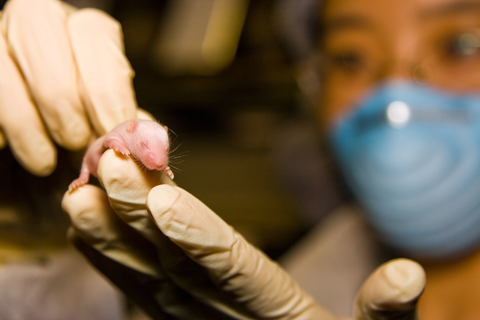The first drug that could reverse diabetes

With no insulin injections, no avoiding sugar, a daily drug can reverse diabetes symptoms in mice, opening up the possibility of a much easier way for people with diabetes to keep their blood sugar level within safe limits (New Scientist, 2017).
In 2016, the number of people living with diabetes in the UK passed four million, an increase of 65% over the course of a decade. About 3.5 million people have been diagnosed, but 550,000 people are thought to have undiagnosed type 2 diabetes.
Many people develop type 2 diabetes as they get older, as their body’s response to insulin gets weaker. Some people can manage their symptoms by sticking to a restrictive diet, or using drugs to remove sugar from their system, although many of these have side effects, such as weight gain or diarrhoea. These drugs can only help manage the disease, they cannot reverse it. “We don’t have anything that can overcome insulin resistance” said Emily Burns of Diabetes UK. As a result, many people end up having to inject insulin to make sure excess sugar is removed from their blood. Left untreated, type 2 diabetes can lead to heart and kidney disease, nerve damage, foot ulcers and vision problems.
A daily pill that restores the body’s sensitivity to insulin may make it easier to control the increase in diabetes in affluent nations where obesity is on the rise. Stephanie Stanford of the University of California, San Diego, and her team have found that giving mice with diabetes a drug that affects insulin signalling restores their ability to control their blood sugar levels.
The drug was given daily, by mouth, and did not seem to have any side effects in the mice. The mice had developed diabetes after a high fat diet had made them obese. “This could lead to a new therapeutic strategy for treating type 2 diabetes,” said Stephanie Stanford, whose team believes that the drug could lead to fewer people with adult onset diabetes becoming dependent on insulin injections. Emily Burns said “If this new drug works as described, it could be used to reverse insulin resistance, but we need to know first if it does that safely in people.”
The drug works by inhibiting an enzyme called low molecular weight protein tyrosine phosphatase (LMPTP), which seems to contribute to cells losing their sensitivity to insulin. By hindering LMPTP, the drug reawakens insulin receptors on the surface of cells, especially in the liver, which normally absorb excess sugar from the blood when they detect insulin.
The gene that makes LMPTP has previously been linked with diabetes-like problems in people, prompting the team to investigate further. When the group stopped the gene working in mice they no longer developed diabetes if fed a high fat diet.
Just stopping this gene in the liver was enough to produce the same effect. “We found that LMPTP is a critical promoter of insulin resistance that develops during obesity,” said Stephanie Stanford. So the team developed a drug to block the LMPTP enzyme’s actions in the liver. Stephanie Stanford said “Our inhibitor increased activation of the insulin receptor in the liver, and reversed diabetes without any apparent negative side effects.”
“The elegant studies here provide proof of concept that targeting LMPTP in the liver improves glucose control and liver insulin signalling in animals,” said Daniel Drucker of the Lunenfeld-Tanenbaum Research Institute in Toronto, Canada, who said targeting enzymes like LMPTP has long been a goal for researchers tackling diabetes. He said so far most of these efforts have focused on another tyrosine phosphatase enzyme, but it has proven difficult to block this without also causing side effects.
Stephanie Stanford said “Our compound is very specific for the target, and we do not see any side effects after treatment in mice for a month, but the next step is to rigorously establish if it’s safe for use in clinical trials.”
Emily Burns said “Finding a way to make cells respond to insulin again is an important and exciting strategy. So far, the drug has only been tested in mice, and while some research in human genetics suggests this approach could work in people too, we need more research before we know how relevant this could be for people with type 2 diabetes.”
Stephanie Stanford’s team is now embarking on safety testing in animals. She said “The next step towards the clinic is to understand whether the treatment will be safe for people.”








